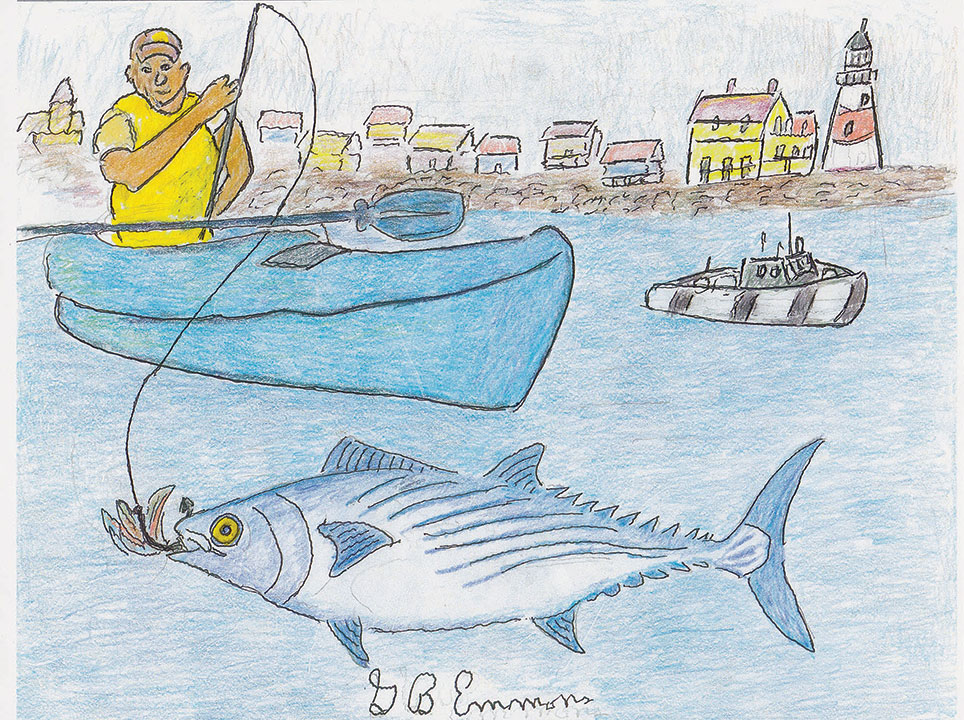Two new species of tropical “tuna” fish are now migrating further north to the South Coast of Buzzards Bay, surprising fishermen who catch them while going after striped bass and bluefish. They are the Atlantic bonito and the false albacore found primarily in more temperate waters around Florida and from the West Indies to Brazil.
Although tuna-like in a number of ways, the bonito is from the tuna and mackerel family; the false albacore is often mistaken for a tuna, but is actually a type of mackerel.
The Massachusetts Division of Fisheries and Wildlife reports that everyone wants to jump on global warming to explain it; however, they say it could be due to a changing bait source, such as an increase in sand eels in our local waters. Experts also say there is a lot we still do not know about these species of tuna/mackerel, resulting in a lack of state fishing regulations for conservation of the species.
In appearance, the bonito has a higher profile, with eight bright blue diagonal lines across its back, as illustrated. The false albacore has smaller wavy lines on its back, but both have the same streamlined torpedo shape for robust swimming at the end of a line when hooked. Subsequently, both are sought by anglers for a 40 mile-per-hour speedy stripping of line when hooked, as thrilling as long ago when a harpooned whale was said to drag a small boat on a Nantucket sleigh ride.
For this angling challenge, both species have affectionately been dubbed “little tunny” after their larger cousins. When they first appear when our waters warm up in spring, they are more often caught in shallower coastal brackish estuaries. They often come into view while the carnivores surface feeding in schools after baitfish. Their staple diet includes menhaden, peanut bunker, and Atlantic big eye. A characteristic surface gathering can easily be located by an overhead vociferous aerial conflagration of gulls and terns diving down to where they are feeding, more easily to be caught.
Today, recreational small boat fishing has been revolutionized with the growing kayak culture. There is also a new kayak design of sit-on-top construction as opposed to the sit-in style. This enables a new genre of fly fishing men and women to arm wave the magic wand of a fly rod as the latest challenge to anglers. When the tunny takes off with their line to leap out of the water and then dive to twist and turn, it races away, perhaps like a fishing heritage trip back in time like one of those Nantucket sleigh rides; and it happens right here on the South Coast of Buzzards Bay, with a kayak tied on to a tunny fish.
By George B. Emmons
